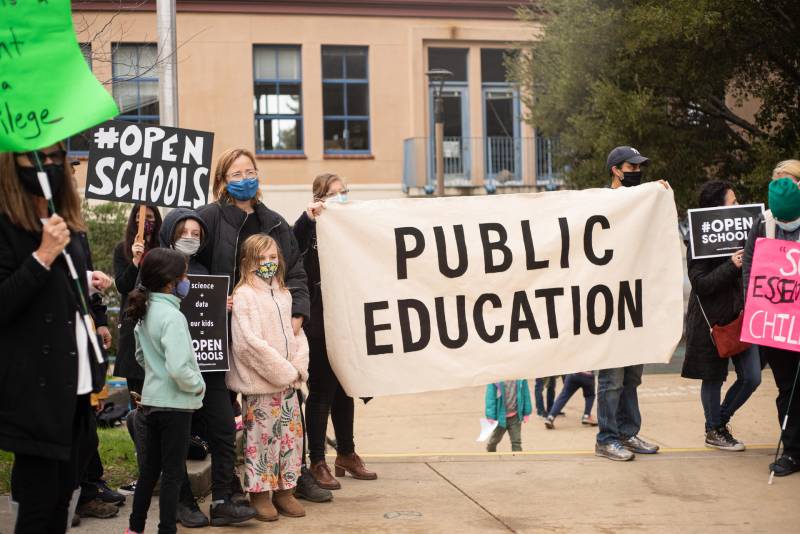Parents have come to understand their child’s school day — and what it’s like to be a teacher — more intimately than they ever wanted.
Last spring, social media was filled with memes featuring tired parents applauding their children’s teachers. Everyone wanted to celebrate teachers’ heroic work and their resilience as they adapted to difficult conditions.
Anyone working from home with kids still think teachers are paid appropriately? pic.twitter.com/vqA0fsRp9s
— James DeVaney (@DeVaneyGoBlue) March 17, 2020
“It’s been interesting to see the empathy arc develop since the start of the pandemic and shelter in place last spring,” says Janelle Scott, a professor at the UC Berkeley Graduate School of Education.
“We saw a kind of immediate outpouring of public empathy for teachers, but also this groundswell of ‘pay teachers whatever they want.’ And that we’ve been woefully under-compensating them for what they do.”
Scott says that empathy has been tested recently as many parents call for schools to reopen for in-person learning. Some families and many teachers fear their going back to in-person school will expose them to COVID-19. School administrators have been caught in the middle, trying to meet the needs of all parties.
“One of the more critical challenges in front of us in the next few years is to restore some two-way empathy between families and schools,” says Scott. “And to really appreciate that teachers and school leaders and district leaders are bound up in the same kind of destiny that families are.”
That includes devastating personal losses, mental health challenges, the lasting health effects from COVID-19 and economic hardship.
Even after it’s safe for schools to reopen for in-person learning, Scott says, schools do not exist in a silo — and they’ll be affected by all the inequalities and hardships of the pandemic.
“The concentration of illness in Black and Latino and poor communities in California is important because it means that some communities, given our segregation, have no idea of the scale of loss and devastation,” says Scott.

